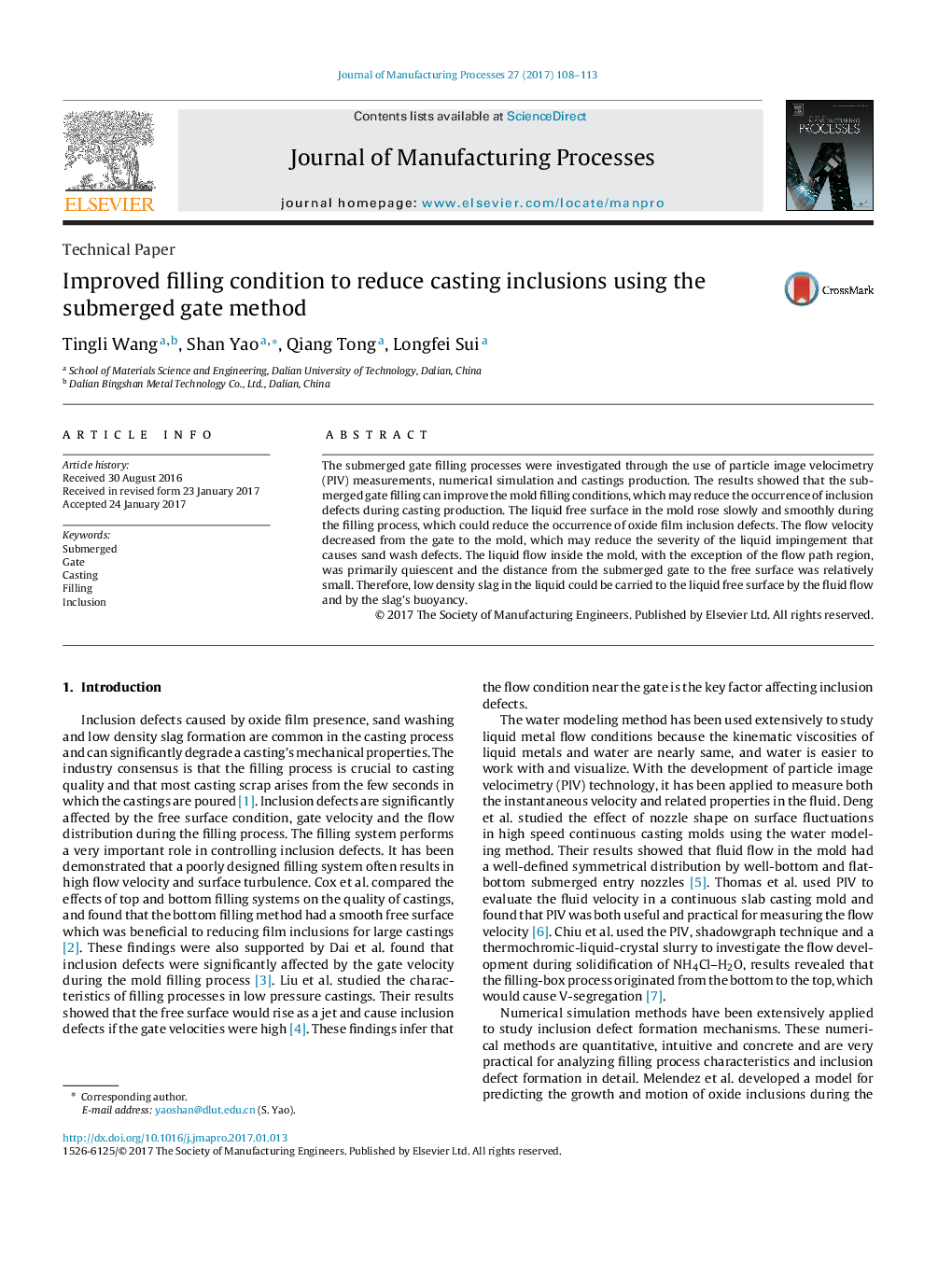| Article ID | Journal | Published Year | Pages | File Type |
|---|---|---|---|---|
| 5469416 | Journal of Manufacturing Processes | 2017 | 6 Pages |
Abstract
The submerged gate filling processes were investigated through the use of particle image velocimetry (PIV) measurements, numerical simulation and castings production. The results showed that the submerged gate filling can improve the mold filling conditions, which may reduce the occurrence of inclusion defects during casting production. The liquid free surface in the mold rose slowly and smoothly during the filling process, which could reduce the occurrence of oxide film inclusion defects. The flow velocity decreased from the gate to the mold, which may reduce the severity of the liquid impingement that causes sand wash defects. The liquid flow inside the mold, with the exception of the flow path region, was primarily quiescent and the distance from the submerged gate to the free surface was relatively small. Therefore, low density slag in the liquid could be carried to the liquid free surface by the fluid flow and by the slag's buoyancy.
Related Topics
Physical Sciences and Engineering
Engineering
Industrial and Manufacturing Engineering
Authors
Tingli Wang, Shan Yao, Qiang Tong, Longfei Sui,
